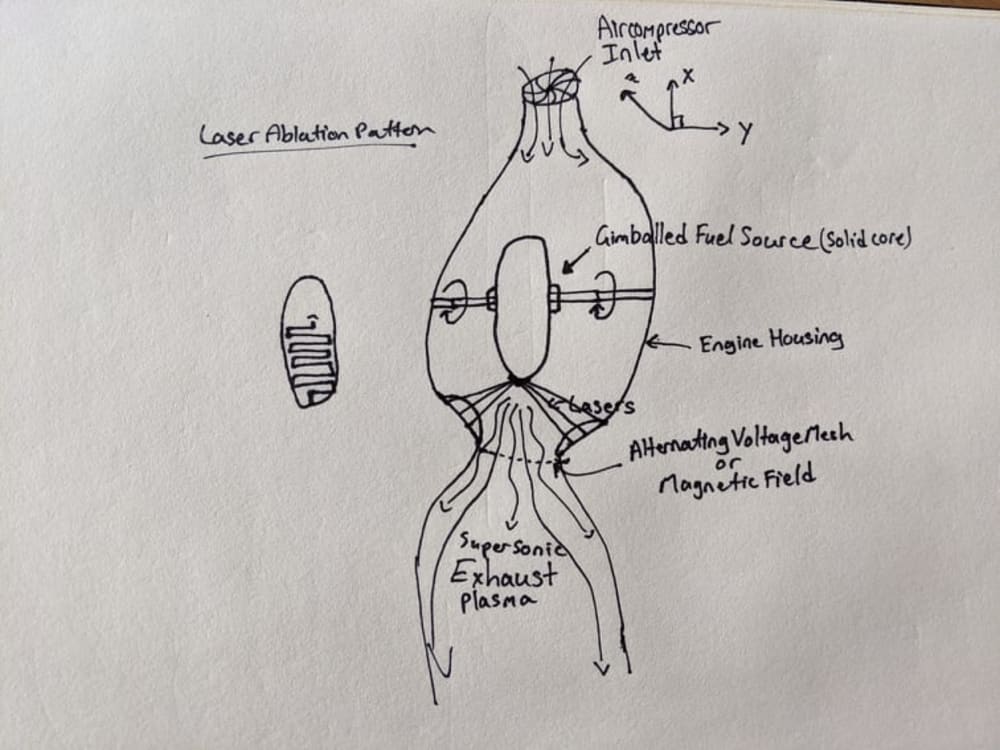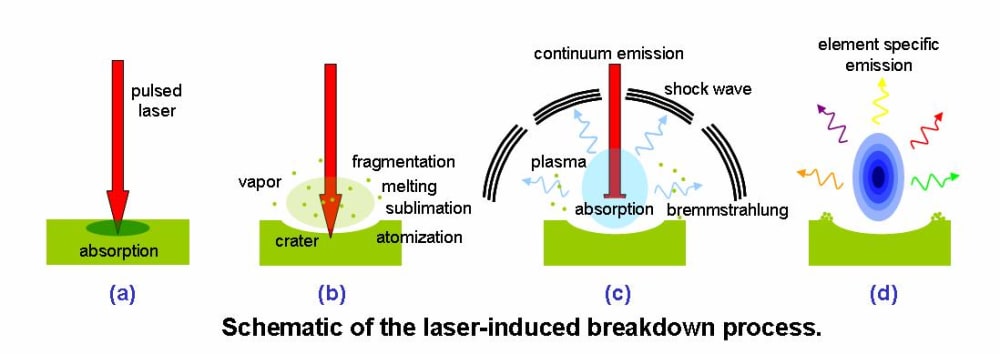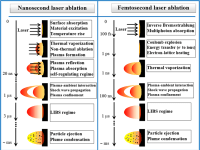Introduction/ Inspiration: Laser-induced breakdown spectroscopy (LIBS) uses a high intensity laser pulsed for ns (nanoseconds) to form a plasma and atomize a local point on a material sample. When the laser is discharged it ablates a very small amount of material, in the range of nanograms to picograms, which generates a plasma plume with temperatures in excess of 100,000 K.
At the high temperatures during the early plasma, the ablated material dissociates (breaks down) into excited ionic and atomic species. Within a very small timeframe the plasma expands at supersonic velocities and cools.
This is the basis of my idea: Using lasers to ablate a solid material, and in the process harnessing the supersonic velocities of the ablated plasma (atoms/ions) to propel an air/spacecraft.
With enough research I believe we may be able to optimize both the solid material properties (probably a mixture of metals and other elements) and the laser properties used. The solid materials composition can be optimized to ablate at the lowest of power densities (W/cm2) and highest pulse durations (us, ns, ps) from the laser. In doing so we can still obtain the supersonic velocities from ablation but also try to keep temperatures as low as possible, increasing the overall efficiency of the engine.
The Plasma Solid-State Engine will consist of:
- A gimballed fuel source in the form of a custom formulated solid material
- One or more articulating lasers (with varying power output, coherence, pulse etc.)
- A power source for the lasers (Battery, Capacitors, Nuclear, Chemical)
- An alternating high voltage mesh to attract then repel the ions out of the 'combustion chamber' or a magnetic field that will do the same.
- Air compressor when used in air flight
The lasers in this engine will be powered by batteries and capacitors onboard an aircraft or by nuclear power onboard an interplanetary spacecraft. The idea here is that solid fuel is denser than liquid fuel, and if we can extract the energy within the solid fuel with the same efficiency as liquid fuel, then we have access to a higher energy/power density fuel. The solid fuel will slowly rotate along the Y-axis while the lasers ablate it in a controlled predetermined pattern (see illustration). The pulsed nature of the laser may also offer finer control (nanoseconds) when performing delicate maneuvers such as landing on other planets or docking in space.
Like this entry?
-
About the Entrant
- Name:Firas Najjar
- Type of entry:individual
- Patent status:none








